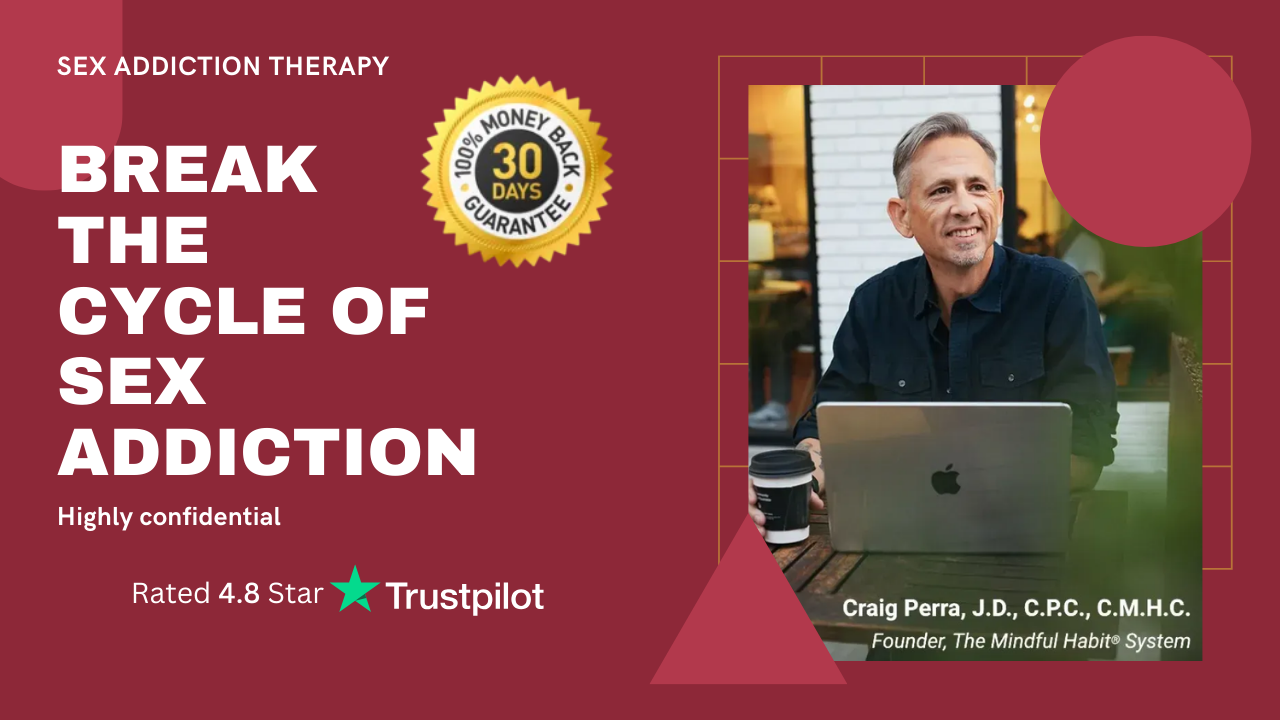The journey of overcoming sex addiction is a challenging but ultimately rewarding process. One of the most difficult aspects of recovery is dealing with the withdrawal symptoms that arise when you decide to stop the addictive behaviors. These symptoms can be both physical and psychological, making it crucial to identify them early and employ effective strategies to overcome them. In this article, we will explore the common sex withdrawal symptoms, how to recognize them, and practical ways to manage these challenges as you move from urges to healing.
Understanding Sex Withdrawal
Sex addiction, like other forms of addiction, rewires the brain to crave the intense dopamine rush associated with sexual activities. When you remove these behaviors, your brain and body experience withdrawal as they adjust to functioning without the addictive stimuli. This period can be incredibly difficult, as the brain attempts to recalibrate its reward system. However, recognizing the symptoms of withdrawal and understanding why they occur is the first step toward overcoming them.
Common Sex Withdrawal Symptoms
-
Intense Sexual Urges
- Identification: The most prominent symptom of sex withdrawal is the resurgence of intense sexual urges or cravings. These can be triggered by various stimuli, such as specific environments, stress, or even boredom.
- Why It Happens: Your brain is used to regular dopamine surges from sexual behaviors, and when those are removed, it triggers cravings to restore the dopamine balance.
-
Mood Swings and Irritability
- Identification: You may find yourself experiencing rapid changes in mood, from irritability and anger to sadness or frustration. These mood swings can be unpredictable and often occur without an obvious cause.
- Why It Happens: The brain’s attempt to restore balance without the dopamine highs from sexual activities can lead to emotional instability. The lack of dopamine, combined with the stress of withdrawal, often results in these mood fluctuations.
-
Anxiety and Depression
- Identification: Feelings of anxiety and depression are common during withdrawal. You may experience a pervasive sense of unease, worry about the future, or feelings of hopelessness.
- Why It Happens: Sex addiction often masks underlying emotional or psychological issues. When the addictive behavior is removed, these issues can resurface, leading to anxiety and depression. Additionally, the dopamine deficit in the brain can exacerbate these feelings.
-
Physical Discomfort
- Identification: Physical symptoms such as headaches, muscle tension, fatigue, and sleep disturbances are common during sex withdrawal. You might also experience restlessness or a general feeling of unease.
- Why It Happens: The physical symptoms are a manifestation of the stress your body is under during withdrawal. The absence of the usual dopamine release can lead to physical tension and discomfort as your body adjusts.
-
Difficulty Concentrating
- Identification: Withdrawal can affect your ability to focus and concentrate. You may find it challenging to stay on task, remember details, or make decisions.
- Why It Happens: The brain’s focus on craving satisfaction and the emotional turmoil of withdrawal can interfere with cognitive functions, making it hard to concentrate.
Strategies to Overcome Sex Withdrawal Symptoms
-
Acknowledge and Accept Your Symptoms
- What to Do: The first step in overcoming withdrawal symptoms is to acknowledge that they exist and accept them as part of the recovery process. Understand that these symptoms are temporary and a natural part of your brain’s healing.
- How It Helps: Acceptance reduces the power these symptoms have over you and allows you to approach them with a calm and proactive mindset.
-
Develop a Structured Routine
- What to Do: Create a daily routine that includes physical activity, healthy meals, and regular sleep patterns. Engaging in structured activities can help regulate your mood and reduce the intensity of cravings.
- How It Helps: A routine provides stability and predictability, which can counteract the chaos of withdrawal. Exercise, in particular, helps release endorphins, which can improve mood and reduce physical discomfort.
-
Practice Mindfulness and Relaxation Techniques
- What to Do: Incorporate mindfulness practices such as meditation, deep breathing, and progressive muscle relaxation into your daily routine. These techniques help you stay present and manage the stress of withdrawal.
- How It Helps: Mindfulness helps you observe your cravings and emotions without judgment, reducing their intensity and helping you maintain control over your actions.
-
Build a Support Network
- What to Do: Reach out to friends, family, or support groups who understand your journey. Having a trusted network to talk to during difficult times can provide emotional support and encouragement.
- How It Helps: Social support is a critical factor in overcoming addiction. It reduces feelings of isolation and provides a source of accountability and motivation.
-
Engage in Healthy Distractions
- What to Do: Identify activities that you enjoy and that can serve as healthy distractions from cravings. This could include hobbies, creative projects, exercise, or learning something new.
- How It Helps: Healthy distractions shift your focus away from cravings and withdrawal symptoms, giving your brain alternative sources of satisfaction and pleasure.
-
Seek Professional Help
- What to Do: If the withdrawal symptoms become overwhelming, seek the help of a therapist or counselor specializing in sex addiction. They can provide tailored strategies to help you cope with the symptoms and prevent relapse.
- How It Helps: Professional guidance ensures that you are using effective coping strategies and can address any underlying issues that may be contributing to your addiction.
-
Set Small, Achievable Goals
- What to Do: Break down your recovery journey into small, manageable goals. Focus on achieving one day of sobriety at a time, and gradually increase your targets as you progress.
- How It Helps: Setting small goals provides a sense of accomplishment and keeps you motivated. Each goal achieved is a step forward in your recovery journey.
Conclusion
Overcoming sex withdrawal symptoms is a challenging but essential part of the recovery process. By identifying these symptoms early and implementing effective strategies, you can move from the grips of urges to a place of healing and stability. Remember, withdrawal is temporary, and with the right tools and support, you can navigate through this storm and emerge stronger on the other side. Stay committed to your recovery, embrace the process, and trust that every step you take brings you closer to a healthier, more fulfilling life.




